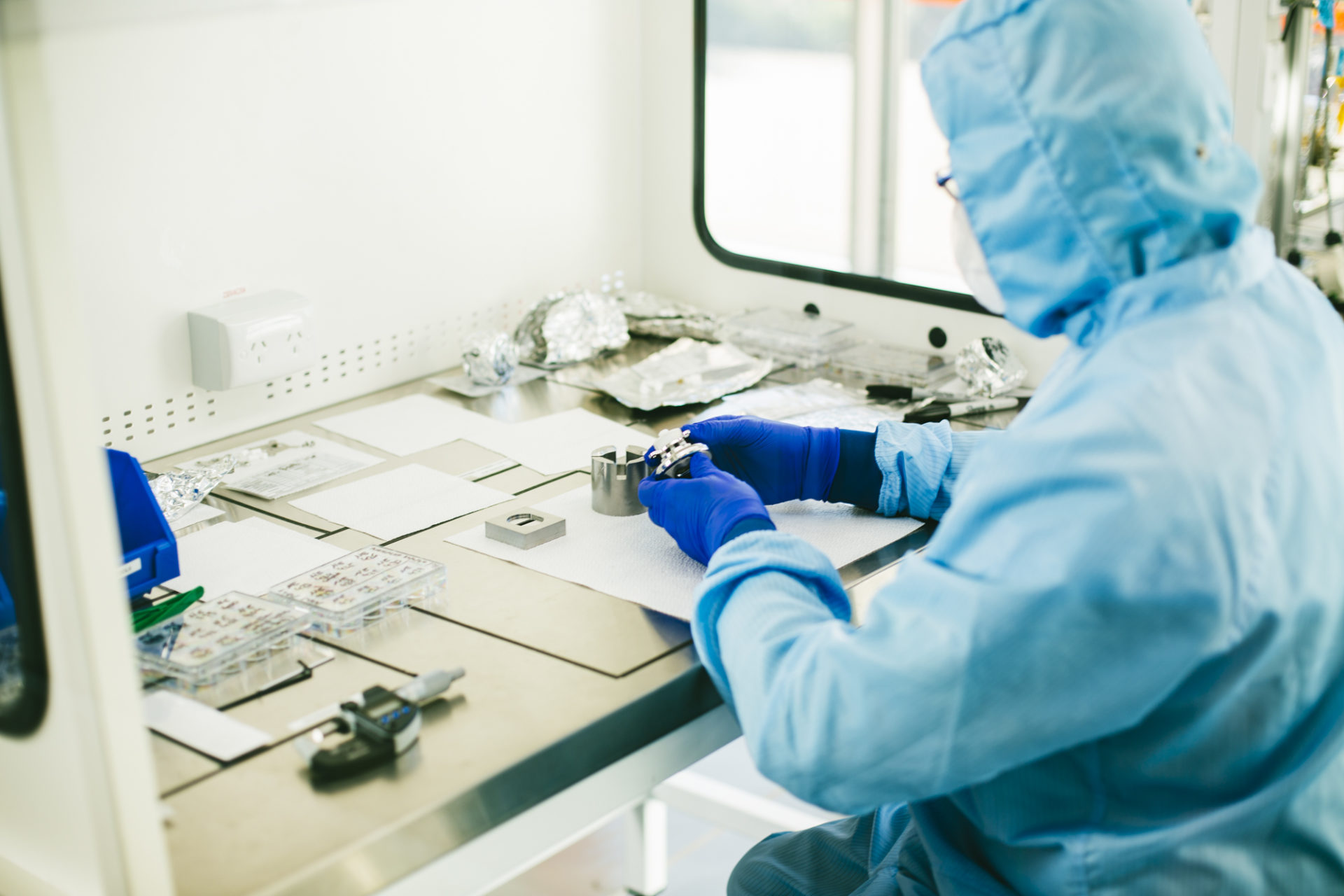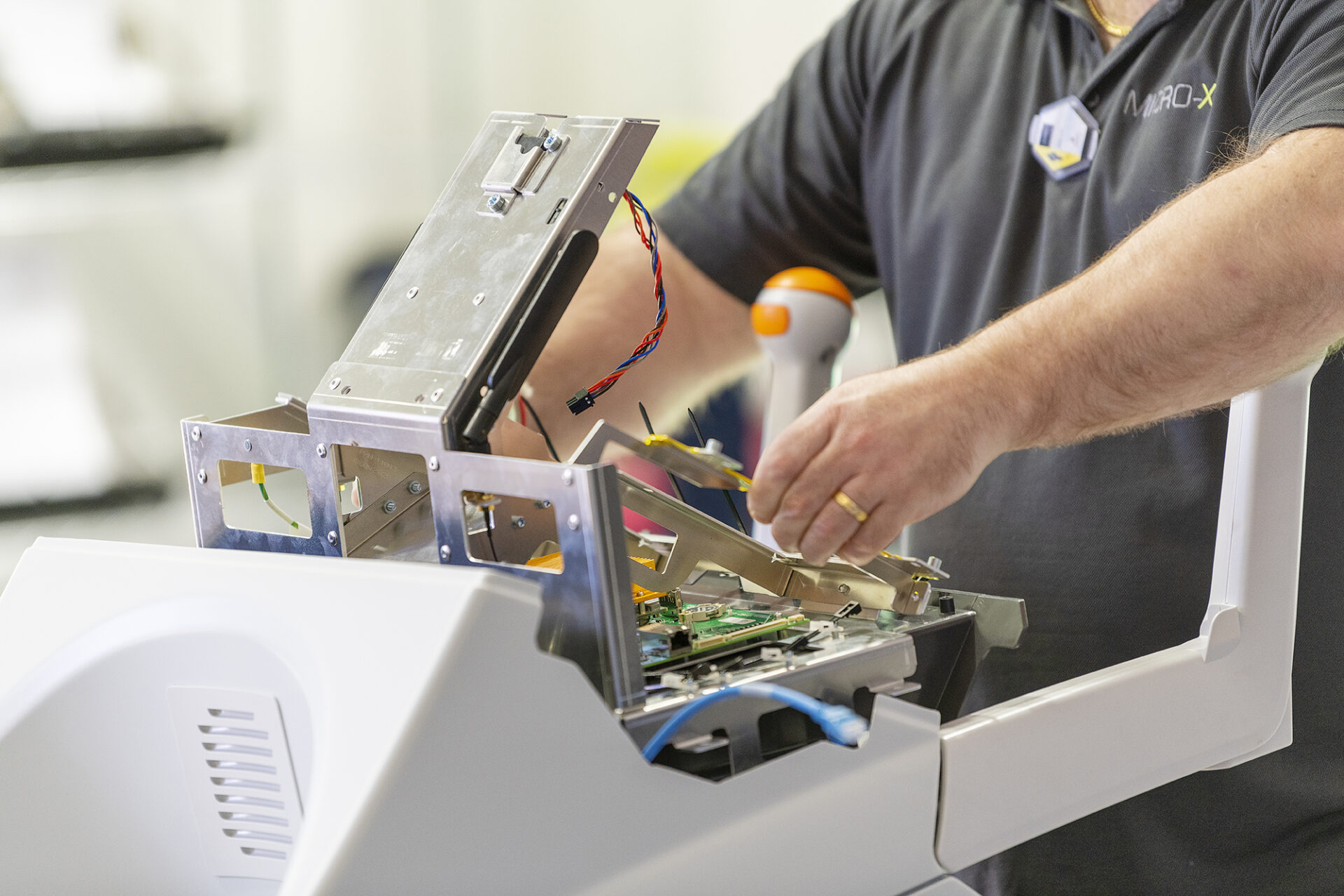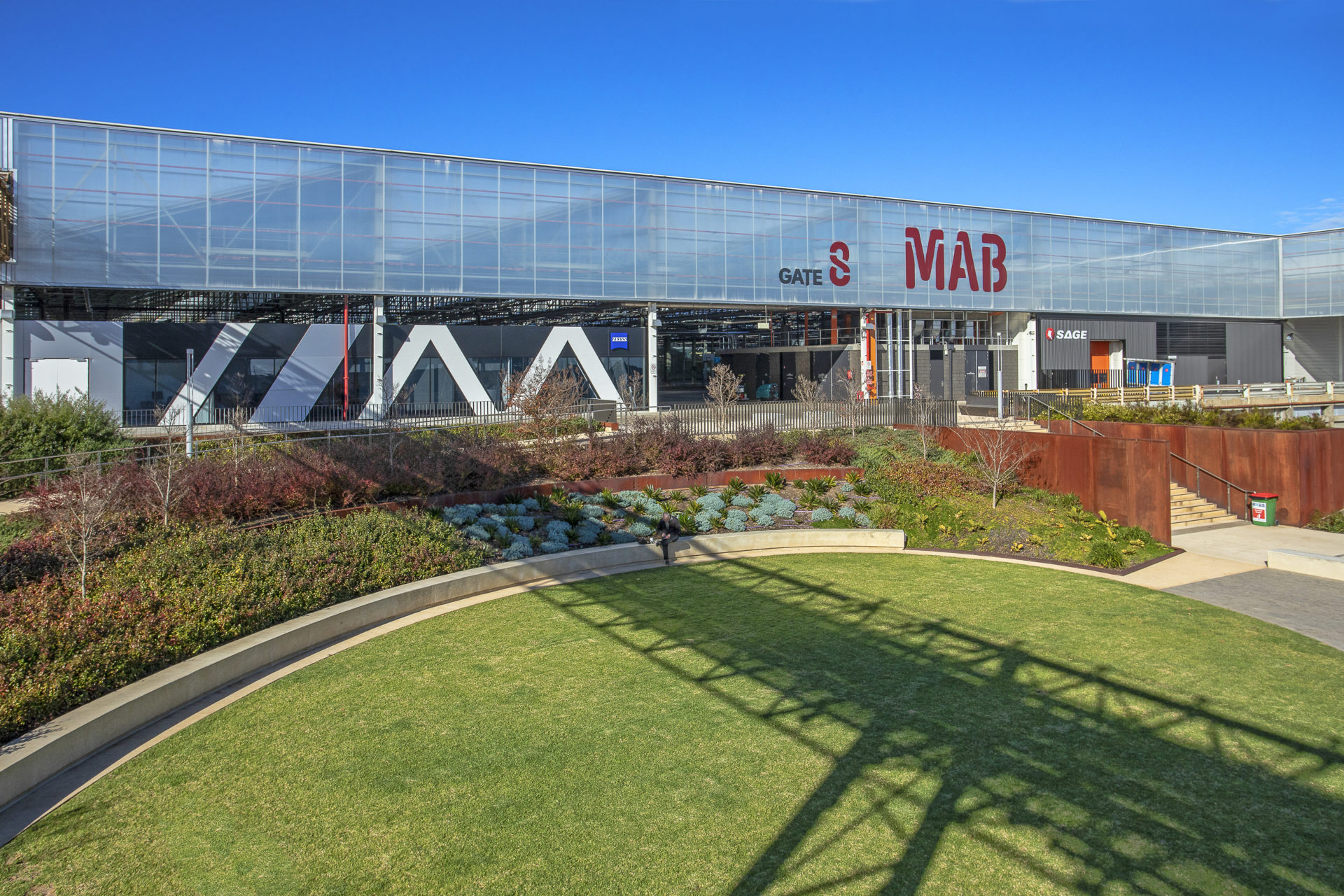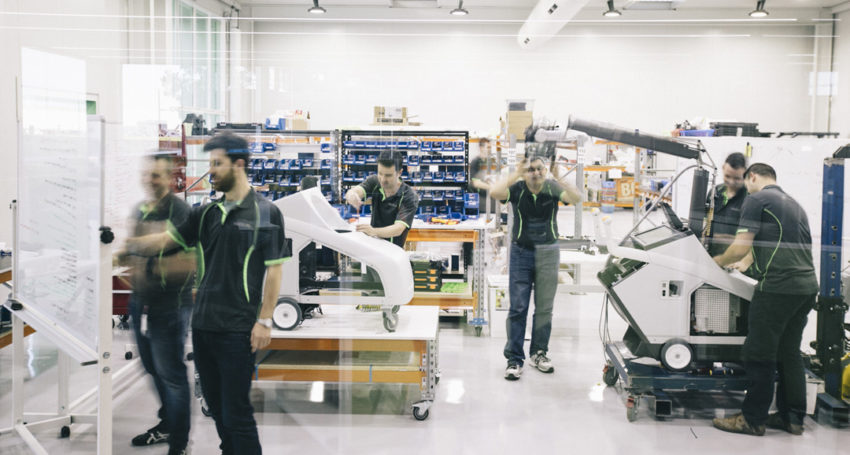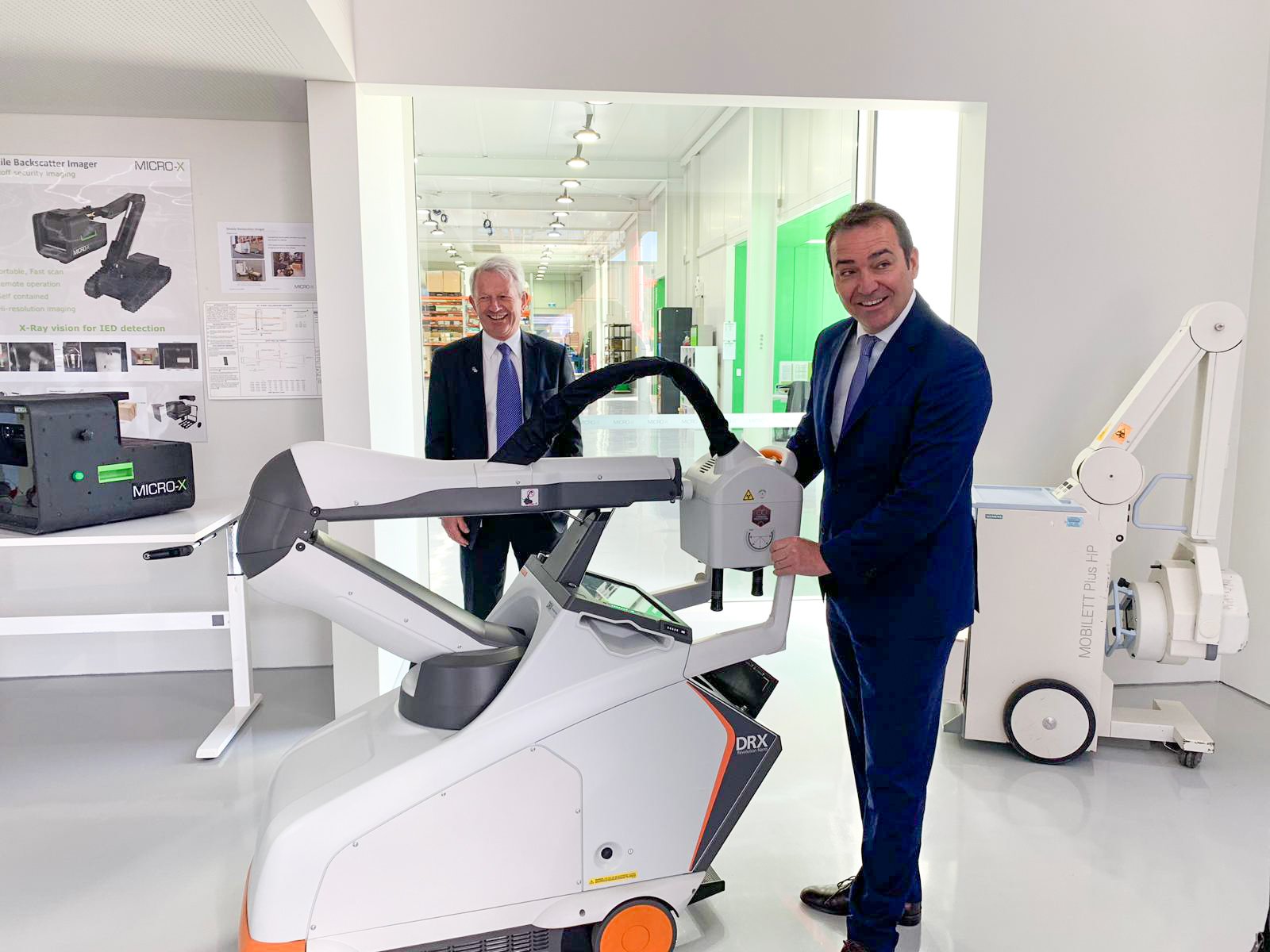Revolutionary Micro-X CT brain scanner designed to save time and lives
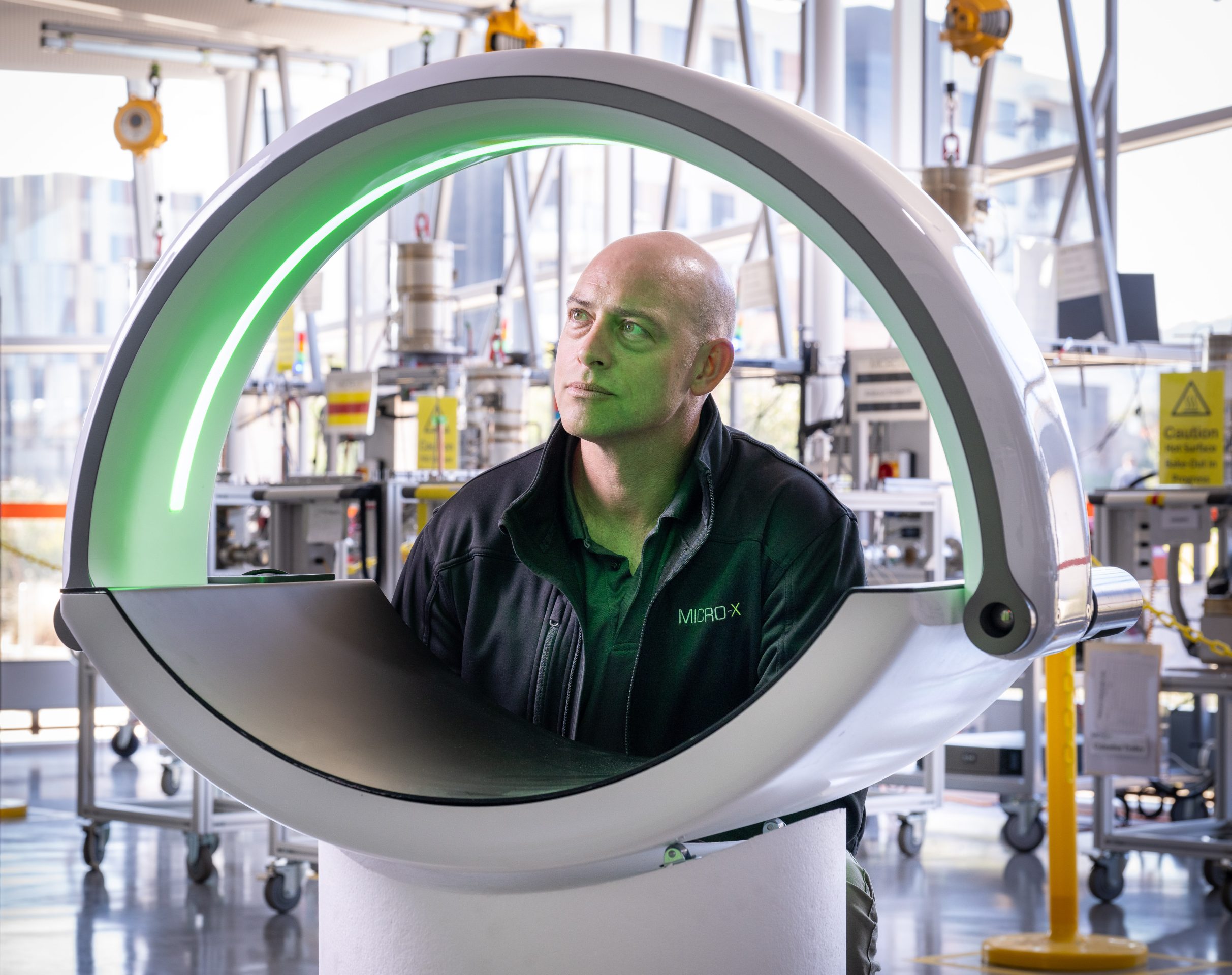
A world-first mobile lightweight CT brain scanner designed, developed and manufactured at Tonsley Innovation District is on the cusp of revolutionising stroke diagnosis and life-saving treatment.
South Australian medical technology company Micro-X is poised to begin the first clinical patient trials of its breakthrough scanner designed to be fitted to a standard ambulance providing rapid on-site stroke diagnosis.
The CT device would enable paramedics to produce a scan of a patient’s brain in just eight seconds from any location, and then immediately forward that image to a stroke specialist for assessment.
The potentially game changing technology could prove crucial in treating stroke patients in the so-called golden hour – the first hour after a stroke – giving patients a higher chance of survival or recovery with limited brain damage.
The Micro-X Head CT device is expected to weigh less than 70kg compared to 500kg for a conventional CT, and has the capacity to produce images with a third of the radiation dose of a normal CT.
Clinical trials of the tech will begin this year in Melbourne and Adelaide.
The clinical trial marks a major milestone for the ASX-listed company which has developed its CT technology with $8 million in funding awarded to project partner the Australian Stroke Alliance in 2021 under the Australian Government’s Medical Research Future Fund.
The development of the mobile CT scanner is made possible thanks to Micro-X’s Nano Electronic X-ray (NEX) tube technology, which relies on a world-first carbon nanotube electron emitter. NEX Technology is the next generation of X-ray, delivering tubes that are smaller, lighter and electronically controlled without sacrificing image quality.
The mobile CT design contains 21 mini X-ray tubes above a curved detector that are rapidly switched on and off in succession, departing from conventional CT which has a one large and heavy rotating X-ray tube and detector gantry.
Micro-X’s patented NEX Technology was developed in collaboration with Flinders University researchers, including the use of special equipment housed at the university’s Tonsley campus.
“Early diagnosis and pre-hospital treatment of strokes has been shown to hugely improve patient outcomes and reduce healthcare costs, revolutionising stroke treatment, particularly in rural and remote locations,” said Micro-X Chief Operating Officer and Engineering Manager Anthony Skeats.
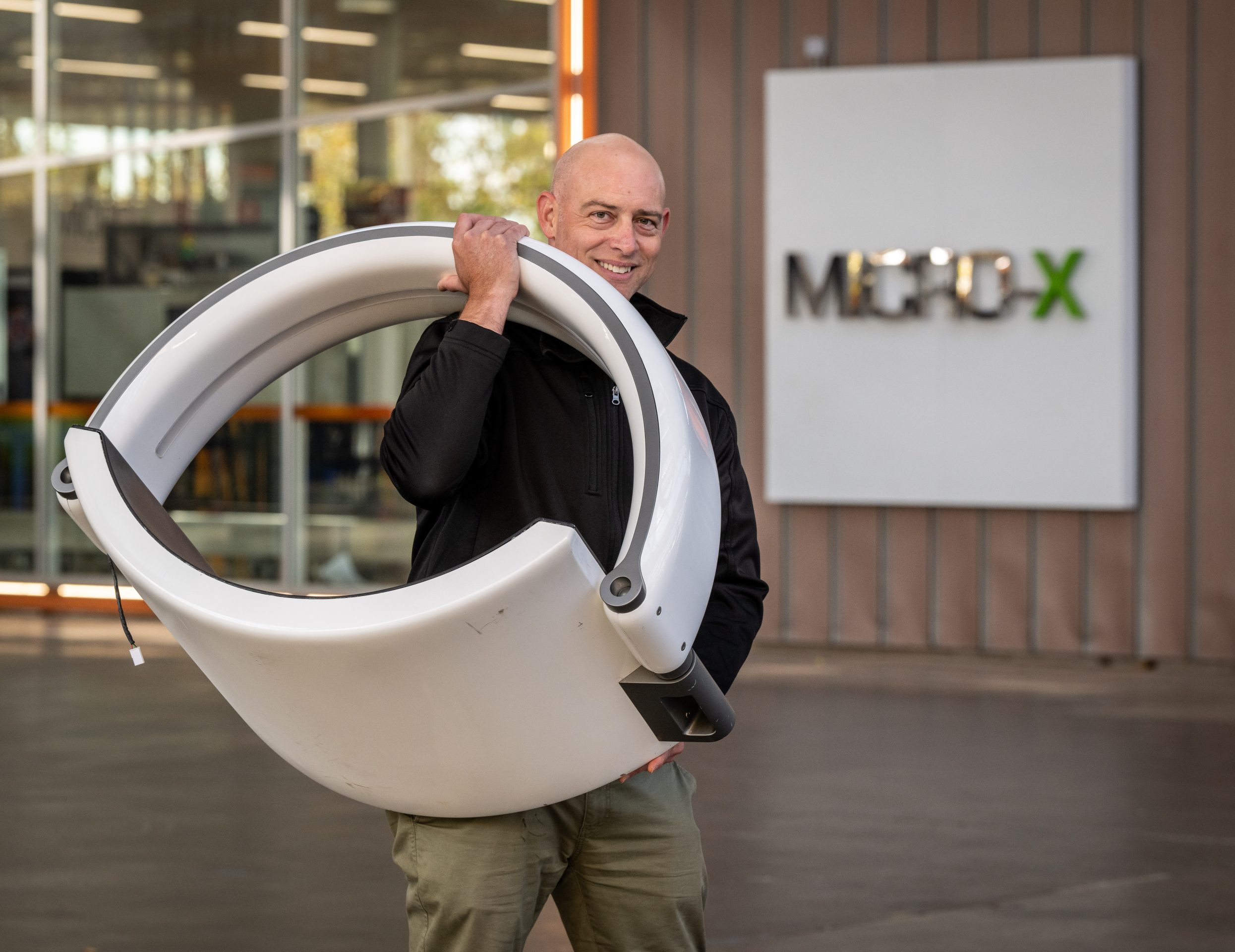
"With the Micro-X Head CT device, paramedics will be able to have a 3D image developed of the brain and then have these images sent instantaneously to a stroke specialist who can determine the type of stroke and then notify the paramedics whether they need to administer drugs or bring them to hospital."
Micro-X Chief Operating Officer and Engineering Manager Anthony Skeats
“This saves crucial time in ensuring that the patient receives the right level of care to limit the possibility of permanent damage to the brain.”
In 2021, strokes were the underlying cause of 8,500 deaths in Australia – 4.9% of all deaths and 20% of cardiovascular deaths according to the Australian Institute of Health and Welfare.
It is projected that by 2050, South Australian health system will treat an extra 1,200 new strokes annually.
The two main types of strokes are ischemic strokes – caused by blockage of an artery – and haemorrhagic strokes, caused by bleeding on the brain. The type of stroke determines the treatment, with more common ischemic strokes requiring the administration of clot-dissolving drugs such as tissue-type plasminogen activator (tPA).
It is crucial that tPA is administered within the first hour after stroke onset. According to the University of Melbourne, only 1.5 percent of stroke patients are treated within this time when they travel to hospital by standard ambulance.
“As part of the hospital trials we will need to identify each of the five different types of brain bleeds multiple times to show the scanner can accurately determine the different strokes patients are having,” Mr Skeats said.
Once the trials have been completed, we would love to see our CT scanners installed and operational in ambulances around South Australia in 2025.
Currently there are two specially built mobile stroke ambulances operating in Melbourne and Sydney, which are equipped with a full CT scanner.
They require a specialised five-person team consisting of two paramedics, a CT radiographer, a stroke neurologist and a stroke nurse specialist that respond exclusively to stroke emergencies, taking these resources out of the hospital.
The compact Micro X CT device would fit on the inside wall of an ambulance and can be rotated into position as required.
"Stroke patients will receive a conventional CT scan and then be rescanned using the Micro-X Head CT. A neurological radiologist will determine whether the Micro-X technology is of diagnostic quality. Our aim is to see it in 10-15% of ambulances initially and paramedics will require only basic radiation training to use our equipment. "
Micro-X Chief Operating Officer and Engineering Manager Anthony Skeats
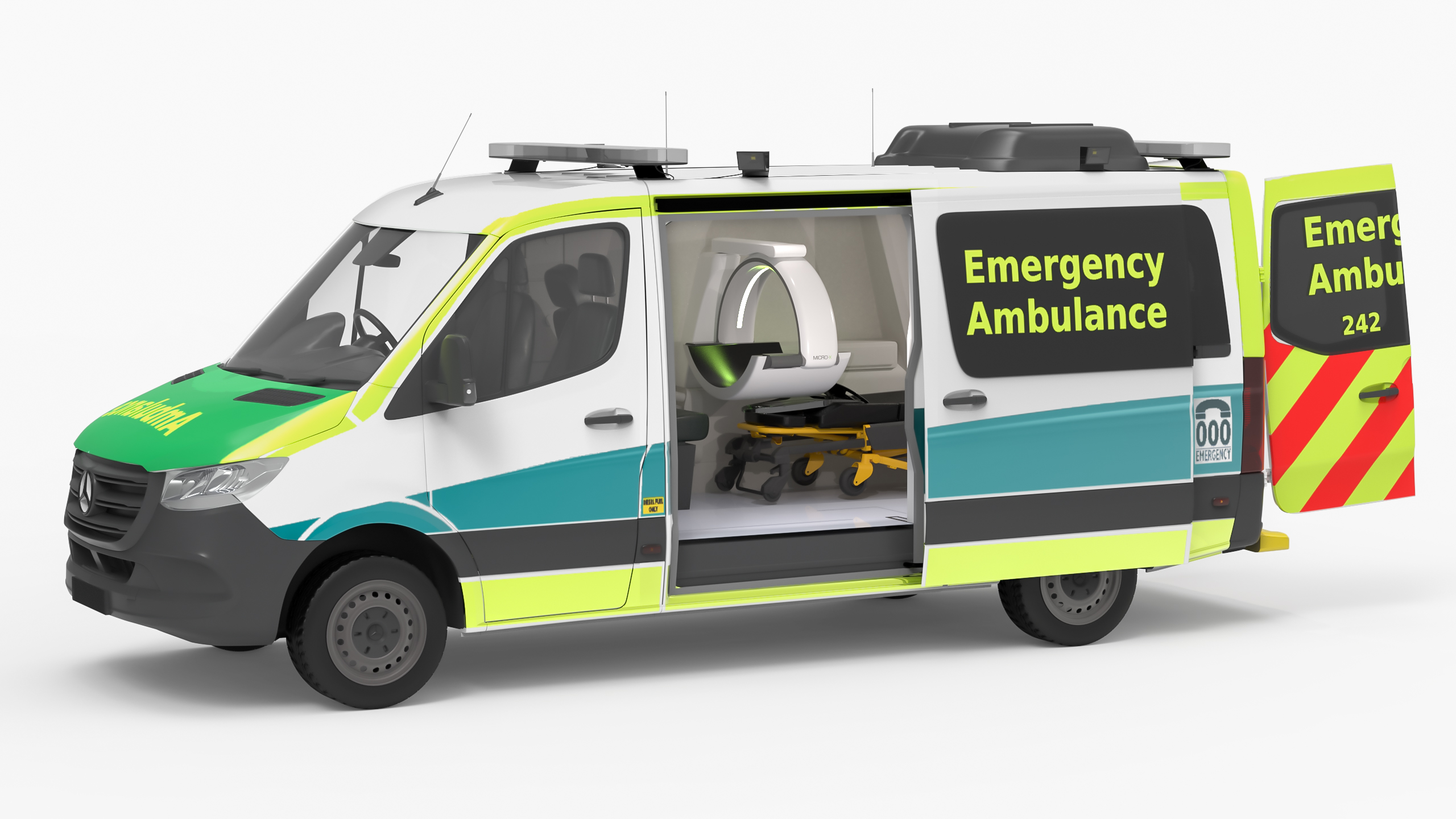
“We want to expand its use so it is not just in ambulances, but it can also be used in ICU, healthcare units and radiology clinics.
“The applications of the scanner can also be extended to be used to detect spinal cord injuries, for example following a road accident, or used to simply scan a person’s hand to see whether they have a fracture, eliminating unnecessary trips to a hospital.”
The market for ambulance stroke care, including air ambulances is approximately $4.5 billion, with the technology having up to an $8.6 billion addressable market in CT, Mr Skeats said.
He has further aspirations to see the cutting-edge technology used in operating theatres, facilitating on-the-spot brain CT imaging rather than interrupting surgery by moving patients to a dedicated CT room.
Together at Tonsley
Stay up to date with the latest news, developments events and activities at Tonsley Innovation District
